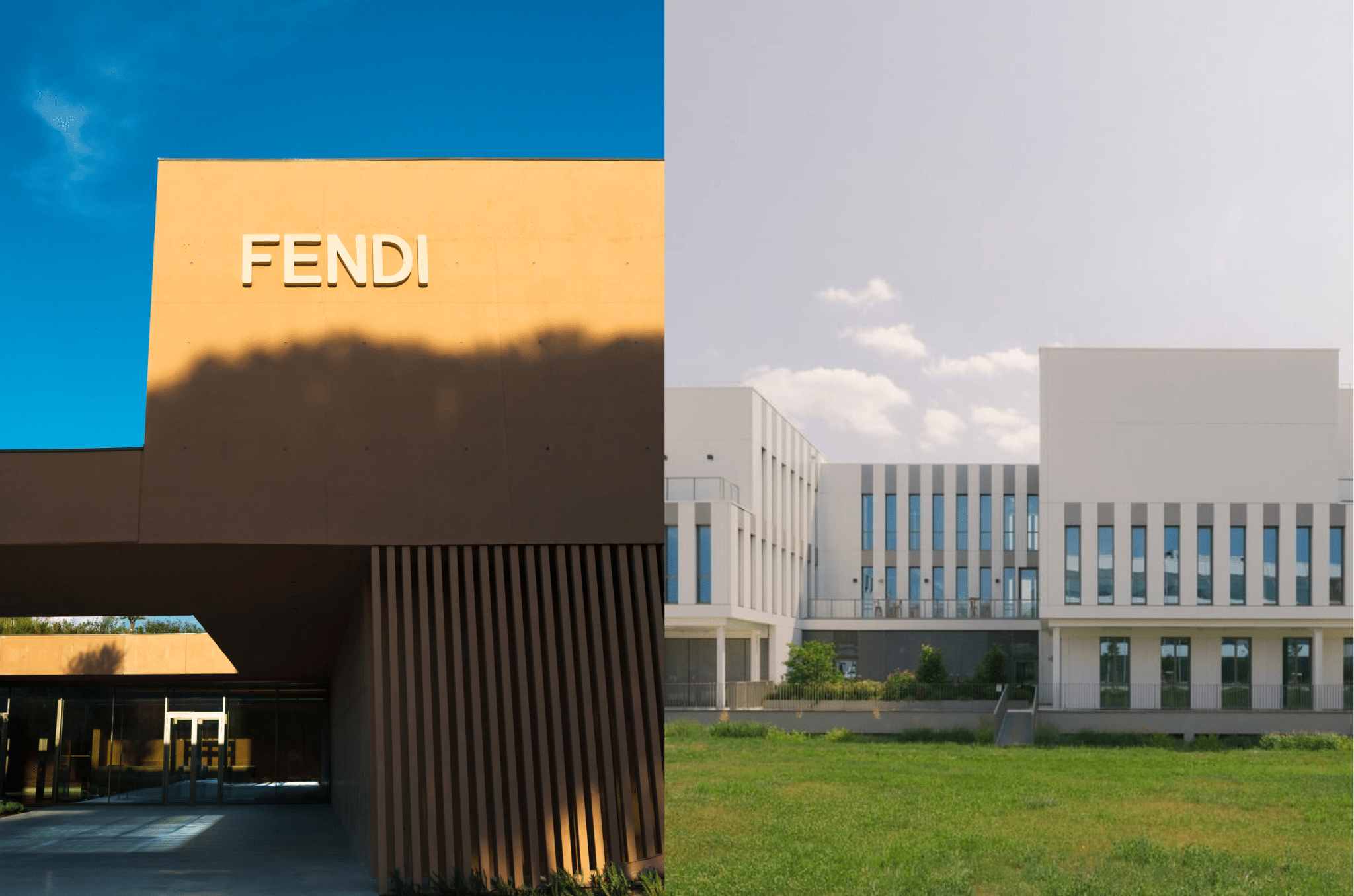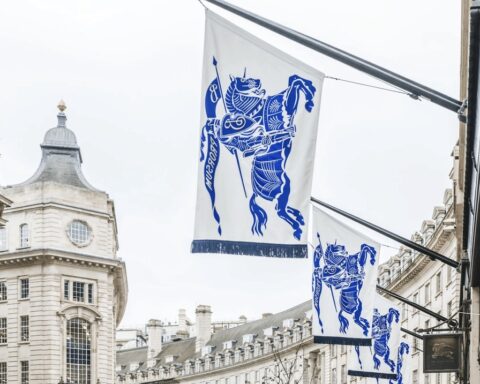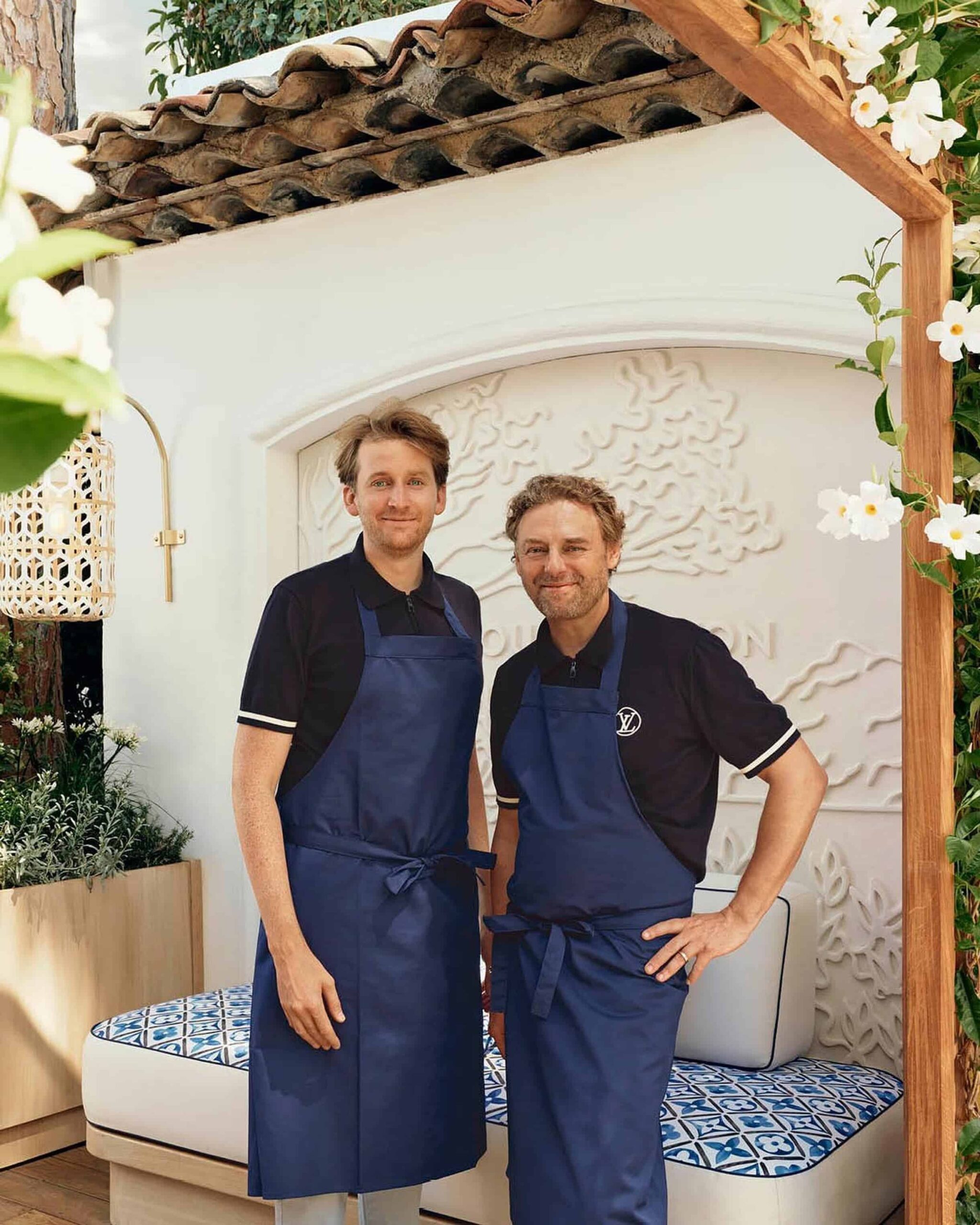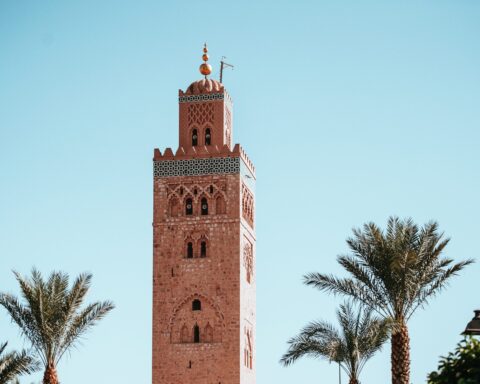[vc_row njt-role=”people-in-the-roles” njt-role-user-roles=”administrator,editor,author,armember”][vc_column][vc_column_text]
While Hermès has announced back-to-back plans to expand or inaugurate production sites in France, Fendi (Lvmh) is stepping up its projects in its homeland.
Jane Birkin’s death has saddened her large circle of fans…
But it could also fuel demand for the famous bags that bear her name, created in 1984 by Hermès.
In mid-June, the saddler from the rue du Faubourg Saint Honoré announced that it had expanded its factory in Saint Junien, in the Nouvelle-Aquitaine region of France. Inaugurated in mid-2017, it produces not only gloves, the region’s speciality, but also small and large leather goods. In particular, Kelly Danse and Birkin handbags…
With an additional 4,700 square metre building, the new factory will eventually house 250 craftspeople, including 210 leatherworkers and 40 glovemakers.
Designed by architects Bruhat & Bouchaudy to be bioclimatic, this is the saddler’s third site in south-west France.
Two new factories in spring 2023
The spring of 2023 has been a busy one for Hermès in terms of production, with two factory openings.
In April, the factory in Louviers, in north-west France, was inaugurated to increase production of the Kelly bag and saddles. Covering an area of 6,200 square metres, it is already home to 170 leatherworkers, rising to 260 by the end of the year. In May, Tournes-Cliron, in the Ardennes, followed, with a 5,700 square metre facility. Starting in early 2023 with 80 craftsmen, it will grow to 260.
This is the kind of human-scale format that the group prefers, preferring to roll out units of this size across France, while at the same time playing a valuable role in local employment, rather than opening giant units. It now has 54 production and training sites in France.
The only exception to this small-scale rule is its textile production site south of Lyon, which is already large and has just been expanded.
Holding Textile Hermès (HTH) was set up in 2001 in La Pierre Bénite to bring together all of Hermès’ textile expertise: spinning, weaving, dyeing, printing, etc. It already employs 950 people, including more than 600 craftsmen, and plans to create nearly 120 additional jobs by 2026.
Living heritage company
To this end, it has just redeployed its activities over three buildings. It has also equipped itself with a new printing line, which will be joined by a second by 2024, to produce the famous “Lyon-style” frame, emblematic of the company, for its famous scarves. These special features earned HTH the coveted “Living Heritage Companies” label last year, to be awarded in 2022.
Entrusted to Lyon-based Unanime architectes, this and previous projects will enable HTH to meet the buoyant demand from its “clothing and accessories” (+36% at constant exchange rates in 2022 to €3.15 billion) and “silk and textile” (+20% to €842 million in 2022) businesses.
But these expansions and openings will also “confirm Hermès’ roots in the cradle of French silk”, according to FashionNetwork.
Artisanal and regional DNA
All the luxury brands are working hard to cultivate this artisanal and regional DNA in order to appeal to a clientele that is more than ever attached to the legitimacy of Made in luxury.
For its part, Fendi, the Italian House of the Lvmh group, has announced a major new project in its native land, a new site to the north of the Tuscan capital.
This comes ten months after the simultaneous commissioning of a site dedicated to the manufacture of shoes, called the New Factory Shoes, in Fermo, in the Marche region, and a state-of-the-art 30,000 square metre leather goods factory in Bagno a Ripoli, south of Florence.
It was the deputy mayor of Serravalle Pistoiese, the municipality that the Italian fashion house had in mind for its new premises, who revealed the truth.
On 20 June, Fendi wrote to make official its interest in building a logistics and industrial centre in the town. According to the local press, the site is expected to cover almost 28,000 square metres by 2025 and employ over 200 people.
Read also > The Old Continent: the top summer destination for non-Europeans – Luxus Plus (luxus-plus.com)
Featured photo : © Press [/vc_column_text][/vc_column][/vc_row][vc_row njt-role=”not-logged-in”][vc_column][vc_column_text]
While Hermès has announced back-to-back plans to expand or inaugurate production sites in France, Fendi (Lvmh) is stepping up its projects in its homeland.
Jane Birkin’s death has saddened her large circle of fans…
But it could also fuel demand for the famous bags that bear her name, created in 1984 by Hermès.
In mid-June, the saddler from the rue du Faubourg Saint Honoré announced that it had expanded its factory in Saint Junien, in the Nouvelle-Aquitaine region of France. Inaugurated in mid-2017, it produces not only gloves, the region’s speciality, but also small and large leather goods. In particular, Kelly Danse and Birkin handbags…
With an additional 4,700 square metre building, the new factory will eventually house 250 craftspeople, including 210 leatherworkers and 40 glovemakers.
Designed by architects Bruhat & Bouchaudy to be bioclimatic, this is the saddler’s third site in south-west France.
Two new factories in spring 2023
The spring of 2023 has been a busy one for Hermès in terms of production, with two factory openings.
In April, the factory in Louviers, in north-west France, was inaugurated to increase production of the Kelly bag and saddles. Covering an area of 6,200 square metres, it is already home to 170 leatherworkers, rising to 260 by the end of the year. In May, Tournes-Cliron, in the Ardennes, followed, with a 5,700 square metre facility. Starting in early 2023 with 80 craftsmen, it will grow to 260.
This is the kind of human-scale format that the group prefers, preferring to roll out units of this size across France, while at the same time playing a valuable role in local employment, rather than opening giant units. It now has 54 production and training sites in France.
The only exception to this small-scale rule is its textile production site south of Lyon, which is already large and has just been expanded.
Holding Textile Hermès (HTH) was set up in 2001 in La Pierre Bénite to bring together all of Hermès’ textile expertise: spinning, weaving, dyeing, printing, etc. It already employs 950 people, including more than 600 craftsmen, and plans to create nearly 120 additional jobs by 2026.
[…][/vc_column_text][vc_cta h2=”This article is reserved for subscribers.” h2_font_container=”tag:h2|font_size:16|text_align:left” h2_use_theme_fonts=”yes” h4=”Subscribe now !” h4_font_container=”tag:h2|font_size:32|text_align:left|line_height:bas” h4_use_theme_fonts=”yes” txt_align=”center” color=”black” add_button=”right” btn_title=”I SUBSCRIBE !” btn_color=”danger” btn_size=”lg” btn_align=”center” use_custom_fonts_h2=”true” use_custom_fonts_h4=”true” btn_button_block=”true” btn_custom_onclick=”true” btn_link=”url:https%3A%2F%2Fluxus-plus.com%2Fen%2Fsubscriptions-and-newsletter-special-offer-valid-until-september-30-2020-2-2%2F”]Get unlimited access to all articles and live a new reading experience, preview contents, exclusive newsletters…
Already have an account ? Please log in.
[/vc_cta][vc_column_text]Featured photo : © Press[/vc_column_text][/vc_column][/vc_row][vc_row njt-role=”people-in-the-roles” njt-role-user-roles=”subscriber,customer”][vc_column][vc_column_text]
While Hermès has announced back-to-back plans to expand or inaugurate production sites in France, Fendi (Lvmh) is stepping up its projects in its homeland.
Jane Birkin’s death has saddened her large circle of fans…
But it could also fuel demand for the famous bags that bear her name, created in 1984 by Hermès.
In mid-June, the saddler from the rue du Faubourg Saint Honoré announced that it had expanded its factory in Saint Junien, in the Nouvelle-Aquitaine region of France. Inaugurated in mid-2017, it produces not only gloves, the region’s speciality, but also small and large leather goods. In particular, Kelly Danse and Birkin handbags…
With an additional 4,700 square metre building, the new factory will eventually house 250 craftspeople, including 210 leatherworkers and 40 glovemakers.
Designed by architects Bruhat & Bouchaudy to be bioclimatic, this is the saddler’s third site in south-west France.
Two new factories in spring 2023
The spring of 2023 has been a busy one for Hermès in terms of production, with two factory openings.
In April, the factory in Louviers, in north-west France, was inaugurated to increase production of the Kelly bag and saddles. Covering an area of 6,200 square metres, it is already home to 170 leatherworkers, rising to 260 by the end of the year. In May, Tournes-Cliron, in the Ardennes, followed, with a 5,700 square metre facility. Starting in early 2023 with 80 craftsmen, it will grow to 260.
This is the kind of human-scale format that the group prefers, preferring to roll out units of this size across France, while at the same time playing a valuable role in local employment, rather than opening giant units. It now has 54 production and training sites in France.
The only exception to this small-scale rule is its textile production site south of Lyon, which is already large and has just been expanded.
Holding Textile Hermès (HTH) was set up in 2001 in La Pierre Bénite to bring together all of Hermès’ textile expertise: spinning, weaving, dyeing, printing, etc. It already employs 950 people, including more than 600 craftsmen, and plans to create nearly 120 additional jobs by 2026.
[…][/vc_column_text][vc_cta h2=”This article is reserved for subscribers.” h2_font_container=”tag:h2|font_size:16|text_align:left” h2_use_theme_fonts=”yes” h4=”Subscribe now !” h4_font_container=”tag:h2|font_size:32|text_align:left|line_height:bas” h4_use_theme_fonts=”yes” txt_align=”center” color=”black” add_button=”right” btn_title=”I SUBSCRIBE !” btn_color=”danger” btn_size=”lg” btn_align=”center” use_custom_fonts_h2=”true” use_custom_fonts_h4=”true” btn_button_block=”true” btn_custom_onclick=”true” btn_link=”url:https%3A%2F%2Fluxus-plus.com%2Fen%2Fsubscriptions-and-newsletter-special-offer-valid-until-september-30-2020-2-2%2F”]Get unlimited access to all articles and live a new reading experience, preview contents, exclusive newsletters…
Already have an account ? Please log in.
[/vc_cta][vc_column_text]Featured photo : © Press[/vc_column_text][/vc_column][/vc_row]










